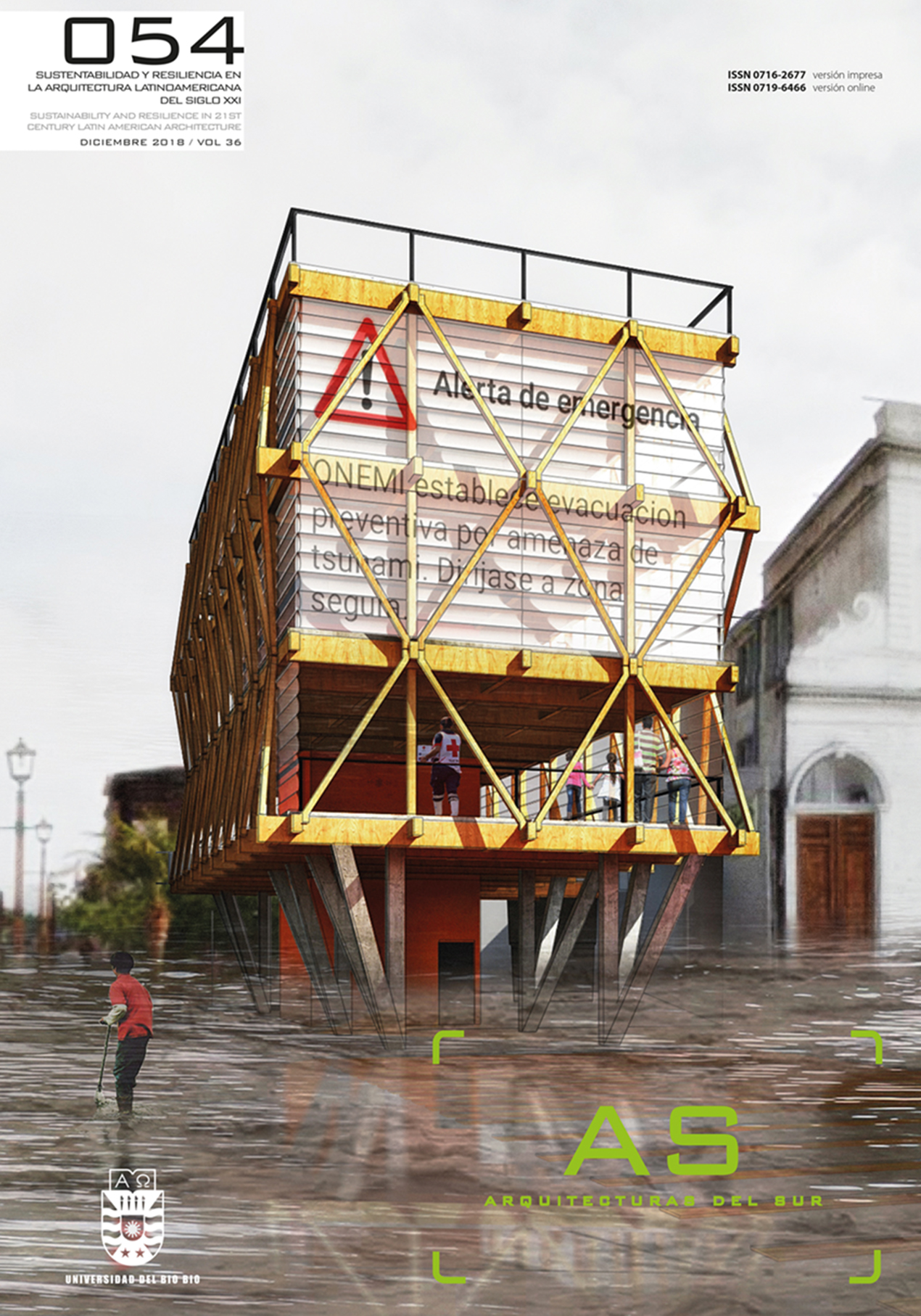The kinetic wall: A human and environmentally responsive facade. An educational approach in architecture
DOI:
https://doi.org/10.22320/07196466.2018.36.054.05Keywords:
responsive architecture, education, kinetic facade, parametric modeling, shadingAbstract
This article presents a framework for the design and functional prototype of a kinetic perforated panel wall that meets human thermal comfort and solar trajectory needs. The description of the framework is put forth as a potentially replicable exercise for architecture schools in Latin America. The study narrows the gap between topics such as responsive architecture, and parametric and algorithmic modeling in the design of building envelopes. The result is a low-cost functional prototype, as well as the framework for a building design exercise that was subsequently discussed in a focus group of undergraduate and graduate students. The method contributes pedagogically to the discussion on the complexity of building envelope design and the introduction of automation, parametric modeling and scheduling in contemporary design exercises.
Downloads
References
BEESLEY, Philip; KHAN, Omar. Responsive Architecture/Performing Instruments. Architectural League of New York, 2009.
LINN, Charles. Kinetic architecture: design for active envelopes. Melbourne: Images Publishing, 2014.
FOX, Michael (ed.). Interactive Architecture: Adaptive World. New York: Chronicle Books, 2016.
KOTNIK, Toni. Digital architectural design as exploration of computable functions, International journal of architectural computing, 2010, vol. 8, n° 1, pp. 1-16.
KRONER, Walter M. An intelligent and responsive architecture, Automation in construction, 1997, vol. 6, n° 5-6, pp. 381-393.
JAGGER, Robert W. New options for the envelope. Face Time: the emergence of the facade as the integrative factor in holistc building design. FACADE TECTONICS: World Congress 2016. Los Angeles. Tectonic Press, 2016, pp. 1 - 14.
OXMAN, Rivka. Digital architecture as a challenge for design pedagogy: theory, knowledge, models and medium, Design studies, 2008, vol. 29, n° 2, pp. 99-120.
RAMZY, Nelly y FAYED, Hatem. Kinetic systems in architecture: New approach for environmental control systems and context-sensitive buildings, Sustainable Cities and Society, 2011, vol. 1, n° 3, pp. 170-177.
SPERLING, David M.; HERRERA, Pablo C.; CELANI, Gabriela y Scheeren, Rodrigo. Fabricação digital na América do Sul: um mapeamento de linhas de ação a partir da arquitetura e urbanismo. São Paulo. Blucher Design Proceedings, 2015, pp. 119-125.
Downloads
Published
How to Cite
Issue
Section
License
The content of the articles published in each issue of Arquitecturas del Sur is the sole responsibility of the authors and does not necessarily represent the opinion of University of the Bío-Bío.
The authors will maintain their copyright; however, they will guarantee the journal the right to first publication and dissemination of their work. The publication of the article in Arquitecturas del Sur will be subject to the Creative Commons International license (CC BY-SA) that allows others to adapt: remix, transform and build on the material for any purpose, even commercially; share: copy and redistribute the material in any medium or format, as long as the authorship and first publication in this journal are acknowledged by citing them correctly, and their new contributions are under a license with the same terms.














 Programa de Información Científica/Concurso Fondos de Publicación de Revistas Científicas 2018/ Proyecto Mejoramiento de Visibilidad de Revistas UBB (Código:FP180007)
Programa de Información Científica/Concurso Fondos de Publicación de Revistas Científicas 2018/ Proyecto Mejoramiento de Visibilidad de Revistas UBB (Código:FP180007) 
